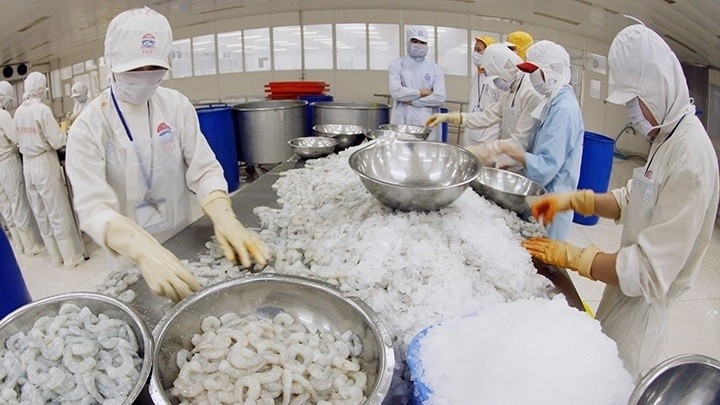Growth amid difficulty
Among Vietnam’s agricultural exports that recorded growth during the January-May period, rice was the best performer, having shipped nearly 2.9 million tonnes worth US$1.41 billion, up 5.1% in volume and 18.9% in value over the same period of 2019.
In May alone, rice exports surged by 47% in volume and 55.3% in value against the previous month, with average prices soaring to US$527 per tonne. Prices in the first five months also rose to 13%, averaging at US$485. This is a bright spot in Vietnam’s farming export picture with the coronavirus remaining complicated in many countries.
For fruits, export revenue plunged by 21.4% to US$1.15 billion as many fresh fruits were unable to reach the Chinese market at the time of the outbreak explosion in the world’s second largest economy. Vietnam’s farming exports continued to face difficulty with the virus having spread widely to Europe and the United States.
Although fruit exports have yet to see growth, there are signs of a possible recovery, with the latest good news coming from the export of fresh lychees to the US, Australia, Singapore and Japan, while measures have also been taken to facilitate the shipment of lychees to China, one of the largest markets for the tropical fruit for years.
The slump in seafood exports is also slowing down with the decline in May at just 1.6%, significantly lower than the previous months, as exports to China soared by 20%. Total seafood exports to China are forecast to fully recover by the end of June. In the meantime, seafood exports to Japan in April and May grew by 16% and 9%, respectively, which is expected to make the East Asian country the largest buyer of Vietnamese seafood in 2020.
According to VASEP, the body of seafood producers and exporters, exports to China and Japan are picking up but recovery is unlikely to be seen in the US and Europe as the virus outbreak has disrupted supply chains and trade activities. In addition, the demand for seafood has fallen as restaurants are closed and consumers have cut their spending. If the outbreak persists, Vietnamese seafoods are expected to face steeper declines in the coming months.
Efforts for quick and strong recovery
At a recent conference, Minister of Agriculture and Rural Development Nguyen Xuan Cuong noted that the demand for food will still grow despite the coronavirus since food is an essential goods. Therefore, Vietnam needs to seize on this opportunity to quickly regain growth by diversifying its exports in order to meet the new consumption demand of each country, such as increasing the share of canned food instead of fresh products.
In this situation, rice is one of the candidates for explosive growth in the coming months. It is estimated that the Mekong Delta will produce 2.3-2.5 million tonnes of rice in the upcoming summer-autumn season, with high-quality rice accounting for 1 million tonnes and jasmine rice 580,000 tonnes. The Philippines is forecast to be the largest buyer of Vietnamese rice.
China and Indonesia have also been increasing their rice imports from Vietnam after the outbreak has subsided, offering a golden opportunity for Vietnam to boost its rice exports.
While rice is looking up, challenges are still gripping the seafood sector. Processors and exporters all agree on the need to focus on markets where the outbreak has been contained to compensate for the continuing downturn in Europe and the US. The export structure is also expected to see a marked shift towards canned products to meet safety requirements in the time of outbreak. In the meantime, it has been predicted that shark catfish exports will not recover until the third quarter, as such it is necessary to develop the domestic market to deal with the surplus.
Steady growth has not been seen in fruit exports, but hope is being pinned on the rapid and strong recovery of demand for imported products in China, a major market for many Vietnamese fruits.
But it is necessary to encourage Vietnamese enterprises to export through official channels, strictly abide by origin tracing and labelling rules, and meet other quality requirements under the agreements with their partners.
After several months of taking a serious hit by the coronavirus, Vietnam’s farming exports are now gradually recovering in some key markets. Challenges will remain in the latter half of 2020 but, as Vietnam has essentially contained the coronavirus outbreak, it is an opportunity for the country to build up importers’ confidence in the quality and safety of Vietnamese farming produce.
















